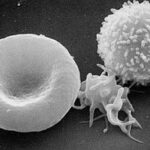Experts say if a heart attack patient receives help immediately, the new drugs that are available to the heart attack victim can stop the heart attack or limit the damage that a heart attack can cause. The damage that a heart attack can cause is irreversible if the person having the heart attack does not receive the treatment needed because once the flow of blood to any portion of the heart is blocked for several hours leads to the damage that can occur.
It is extremely important to know the symptoms of a heart attack. The symptoms can have a wide range and are often confusing to us, but when you know such “risk factors” as diabetes, high blood pressure, obesity, and other family health histories can help reduce heart attacks in some people. This is due to the fact that many heart attack symptoms arise from many of the diseases mentioned.
There are many symptoms that are typical of a heart attack, such as, difficulties in breathing, crushing pains in the chest, weakness, sweating, and shooting pains in a person’s arm, especially the left arm, are often signs of an oncoming heart attack. While these symptoms are the most obvious, there are other symptoms that people that are often ignored because of the lack of knowledge of some of the symptoms of a heart attack.
Often these symptoms fall into the categories of indigestion, nausea, and neck or back pain. Many people ignore these symptoms because the writing them off due to something they have eaten, having the flue or a cold or the may have slept wrong or a sign of arthritis. Also, if you feel any numbness or tingling in your arms, hands, legs, fingers or toes, dizziness or any problems with breathing should not be ignored due to the fact these are often early signs of an onset of a heart attack.
It has been found through clinical studies, in a number of surveys, and through laboratory investigations that there are certain personal characteristics and lifestyles that can contribute to heart attacks. The danger signs that have been found in this research are called “risk factors.”
The risk factors that are associated with personal characteristics and in certain lifestyles are high blood cholesterol, cigarette smoking, diabetes mellitus, and high blood pressure. When there have been attempts to change the risk factors in these studies, it has been proven that it has help in the declining death rate from heart attacks in the United States.
Since the 1960’s in the United States, the death rates from heart attacks have declined dramatically. In the past decade, heart-related problems have decreased 25 percent. This decline in heart attack fatalities can be attributed to better health care and the dramatic changes in the modifications of many of the “risk factors.”
A person’s diet is a major concern of doctors and researches because of the role that it plays on the health of a person’s heart. People who are obese can be predisposed to coronary heart disease because their calorie intake is higher and due to a lack of exercise. When there is a higher intake of calories, it will further raise the blood cholesterol in the individual because of the excess of saturated fats.
There are many factors of a heart attack that are silent and the detection of these silent factors lies on us by having regular checkups for those that have a family history of heart attacks, high blood pressure, high cholesterol or diabetes.



